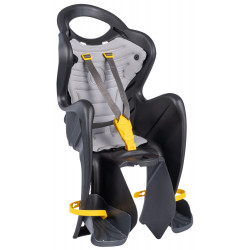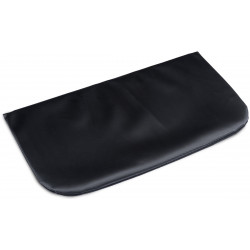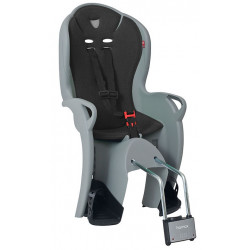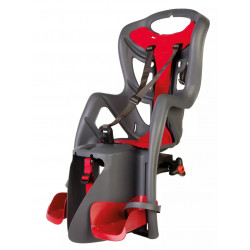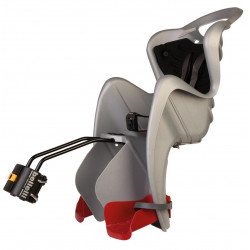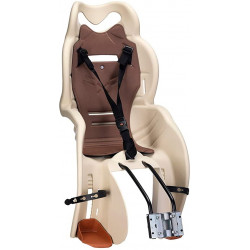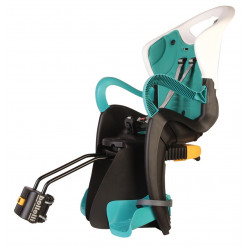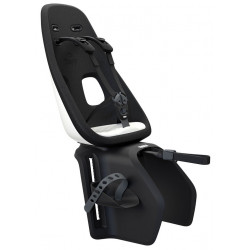When summer comes, cycling parents want to take their little ones with them. Older children can join their parents on their bicycles, while the youngest can sit behind or in a child seat in the front and enjoy the views that pass by. Children's seats can be of various types, but it is important to pay attention to certain factors when choosing them.
From what age can children be carried in a seat?
Children can be carried in seats from the age of one – if you're traveling abroad, the minimum age may vary, so it's important to check the laws of the country you're going to. In some European countries, children can be carried from the age of 9 months. Before buying a seat, don't forget to buy another important safety measure: a helmet. If your child is too young to wear a helmet, cycling will also have to be postponed.
Which chair to choose?
The most popular seats in Lithuania are mounted on the back of the bicycle. Seats attached to the front of the bicycle are generally less common. It is important to note that not all bicycles can be fitted with seats. If you install the seat on the carrier, check whether there are specially prepared holes near the rear wheel frame. The seats are attached to the frame with the additional tube holder included in the kit, so these seats are quite versatile. Rear seats may not fit if the bicycle has full suspension.
When buying a seat, it is recommended that it is equipped with leg protection and that the child's legs do not interfere with the rider. The seat must be equipped with suitable belts that will ensure the child's safety. The belts will not put too much pressure on the child and will allow him to breathe properly. All these factors are perfectly combined with the reliable, high-quality and unique chairs of the Italian manufacturer Dieffe.
When choosing whether to buy a front or rear seat, it is important to compare their advantages and disadvantages. Although front-facing seats allow the child to see more, in the event of an accident, the child may suffer more bruises because the bicycle usually falls straight down. Also, if a child drops trash, it can become entangled in the front wheels and interfere with the steering of the bicycle. Children sitting on the rear seats will be less of a hindrance to the cyclist, and are less likely to get dirty or injured, but sometimes children in such seats are injured when the cyclist gets on or off the bicycle.
Choose a seat based on its installation and the maximum weight of the child. Usually, child seats can support from 9 to 22 kg, which are mounted on the frame or on the carrier, so they are suitable for children up to 3-4 years old. Depending on their construction and the materials used, they can weigh up to 6-7 kg. Choose seats that are easy to put on and take off from bicycles, this will make it easier for you to plan trips together with children or alone.
Children's seats are a great way for children to spend more time with you and to be in the fresh air. You will be able to help children get interested in bicycles from an early age, so there is a good chance that they will also join you when they grow up.



